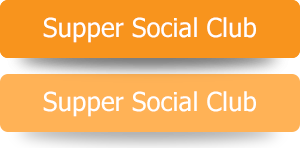What to do with your Emotional Support Unicorn? – HUD’s New Guidance on Assistance Animals

On January 20, 2020, the U.S. Department of Housing and Urban Development published new guidance on Assessing a Person’s Request to Have an Animal as a Reasonable Accommodation Under the Fair Housing Act. The goal of the document is to provide both housing providers and persons with disabilities guidance on what is required to maintain an assistance animal in housing covered under the Fair Housing Act. As many of the current complaints involving the denial of a reasonable accommodation for a person with a disability in housing involve assistance animals, HUD felt considerable pressure to issue guidance, especially from the housing industry that believed that there was abuse of the Act when tenants would claim a disability as a means to keep their animal in a no-pets property. To a great extent, the guidance adopts existing case law with regards to assistance animals, with one glaring exception. HUD adopts a new classification of “unique” animals, which has no basis in either current law or regulation.
Step-by-Step Instructions
The problem with a seventeen-page guidance document on assistance animals is that providers read each and every word and consider the document to have the unquestionable authority of the Ten Commandments delivered straight from the printing press of God. However, as noted by its name “guidance,” it is general instructions on how to follow the law. Accordingly, the guidance does not attempt to encompass every situation.
Authority of Guidance of the Department of Housing and Urban Development
HUD, as the enforcing authority, has the power to interpret the Fair Housing Act, as enacted by Congress. However, if Congress has directly spoken on a subject, then a court or an agency must give effect of the “unambiguously expressed intent of Congress.”[i] If Congress has not addressed an issue, an agency has the authority to promulgate regulations – if those regulations are based upon a permissible construction of the statute. For an agency to have a binding regulation, it must publish a proposal in the Federal Register, give interested members of the public an opportunity to submit written comments on the proposal, and consider those comments before issuing the final regulation. The regulations are preemptively valid and binding.
Unlike a regulation, a guidance document is not binding; instead, a court must give agency guidance deference and the document may have the power to persuade a court to rule in accordance with the guidance.[ii] Usually, an agency’s interpretation of its own regulations is controlling unless plainly erroneous or inconsistent with the regulations being interpreted.[iii] However, the Agency must have some substantive expertise in the area in which the opinion is based. “The basis for deference ebbs when the subject matter of a dispute is distant from the agency’s ordinary duties.”[iv]
Service Animals
The new guidance incorporates the guidance from the ADA to apply to service animals under the Fair Housing Act. However, there are some notable additions:
- Miniature horses are service animals. Service animals include miniature horses, but this classification may not be reasonable based on factors in the service animal regulations. In my opinion, the reasonability assessment would similarly apply to a very large dog. The assessment factors include the size, type, weight of the horse; the degree of control; whether the horse is housebroken; and other legitimate safety requirements.
- The guidance is specific as to the following:
“If the individual identifies at least one action the dog is trained to take which is helpful to the disability other than emotional support, the dog should be considered a service animal and permitted in housing, including public and common use areas. Housing providers should not make further inquiries.”
This is in accord with caselaw under the Fair Housing Act. Housing providers are skeptical when the animal does not perform many trained tasks or fails to exhibit appropriate behavior of a service dog. The Fair Housing Act does not require any training requirement, only the fact that it facilitates a disabled individual’s ability to function.[v] There are no federally mandated animal training standards.[vi] Furthermore, there is no requirement that an animal needs to be professionally trained or certified, or any requirement to show documentation, information, or evidence regarding training. [vii]The rationale behind this is that all disabilities are not identical, and that a dog must be individually trained to assist that person with that person’s disability-related need.
Emotional Support Animals – How to Request an Accommodation
The HUD guidance provides tips for requesters, and assumptions that could be made. A request for an accommodation can be made at any time, and does not need “magic words.” The requestor needs only to make it known that they have a disability, and a disability-related need.
As tips, HUD suggests that the words “reasonable accommodation” should be used, and the request should be made in writing and retained by the requestor and the housing provider — so there is no miscommunication.
A big issue that has arisen many times is the requirement of when to make an accommodation request. This guidance makes the legal standard very clear:
A resident may request a reasonable accommodation either before or after acquiring the assistance animal. An accommodation also may be requested after a housing provider seeks to terminate the resident’s lease or tenancy because of the animal’s presence, although such timing may create an inference against good faith on the part of the person seeking a reasonable accommodation. However, under the FHA, a person with a disability may make a reasonable accommodation request at any time, and the housing provider must consider the reasonable accommodation request even if the resident made the request after bringing the animal into the housing.
While HUD cites regulations in support, current caselaw supports this interpretation as well.[viii] However, for some reason, HUD includes a provision regarding that “such timing may create an inference against good faith on the part of a person seeking a reasonable accommodation.”
There is no legal effect to a “good faith” inference on behalf of anyone in the statute or the regulations. Whether or not a requestor, who has a disability and needs an accommodation, acts in good faith is irrelevant as to whether the person is entitled to have an accommodation. In my twenty years of experience in litigating assistance animal claims, the inference is whether the person has a disability and needs the accommodation, and whether the documents submitted are bona fide.
In any event, before denying a reasonable accommodation request due to lack of information confirming an individual’s disability or disability-related need for an animal, HUD requires a housing provider to engage in a good-faith dialogue with the requestor called the “interactive process.” In fact, according to caselaw, it is “incumbent upon” a skeptical defendant “to request documentation or open a dialogue” rather than to immediately refuse a requested accommodation.[ix] Finally, an undue delay of the approval of an accommodation may be deemed to be a denial.[x] In the guidance, HUD states that as a best practice, a housing provider should make a determination promptly, generally within 10 days of receiving documentation.
Emotional Support Animal – Criteria for assessing a disability and the need for an accommodation.
An emotional support animal must be “necessary to afford [the claimant] equal opportunity to use and enjoy” a dwelling; a “necessary” accommodation is one that alleviates (or lessens) the effects of a disability.[xi] The critical inquiries were whether a condition amounted to a qualifying disability and whether the animal’s presence alleviated the effects of the disorder.
If the disability and need for an animal are not obvious, the housing provider can request verification of both the disability and the nexus between the disability and the animal.
HUD suggests that the housing provider and the person requesting the accommodation use and have the “Guidance on Documenting an Individual’s Need for Assistance Animals in Housing” by repeating this suggestion four times within the guidance. This is the last three pages in the HUD guidance. The information HUD suggests that the medical provider documents for a verification of need of an animal is as follows:
- The patient’s name
- Whether the health care professional has a professional relationship with the patient/client involving the provision of health care or disability-related services
- Whether the patient has a physical or mental impairment
- Whether the patient’s impairment substantially limits at least one major life activity or major bodily function
- The type of animal(s) for which the reasonable accommodation is sought
- Whether the patient needs the animal(s) because it does work, provides assistance, or performs at least one task that benefits the patient because of his or her disability, or because it provides therapeutic emotional support to alleviate a symptom or effect of the disability.
The notable issues are items that HUD specifically states do not need to be disclosed, and the confidentiality surrounding the disclosures:
- Housing providers may not require a health care professional to use a specific form, to provide notarized statements, or to make statements under penalty of perjury.
- Housing providers may not require an individual’s diagnosis or other detailed information about a person’s physical or mental impairments.
- Disclosure of details about the diagnosis or severity of a disability or medical records or a medical examination cannot be required.
- Information relating to an individual’s disability and health conditions must be kept confidential and cannot be shared with other persons unless the information is needed for evaluating whether to grant or deny a reasonable accommodation request.
My suggestion to my client is to put the diagnosis in the letter as well as the substantial limitation that the animal addresses. However, it may exceed what is required by HUD to constitute sufficient verification for a reasonable accommodation request.
Internet Documentation and Telemedicine
HUD and housing providers are skeptical of internet-based ESA letter providers. In the guidance, HUD states “In HUD’s experience, such documentation from the internet is not, by itself, sufficient to reliably establish that an individual has a non-observable disability or disability-related need for an assistance animal.” When a person sees any doctor on one occasion or has one session with an internet-based mental health counselor and obtains a letter, it raises a big red flag to housing providers and their attorneys. As with any disability-related accommodation, it is likely that the provider who recommended the animal did not make an individualized assessment of the person’s needs, or the effect of the animal on that person.
Unique Animals verses Ordinary Animals
In its Guidance, HUD creates a new standard for “unique” animals. The guidance distinguishes between “ordinary” domesticated animals, such as a dog, cat, bird, rabbit, hamster, gerbil, other rodent, fish, or turtle, and “unique” animals such as reptiles (other than turtles), barnyard animals, monkeys, kangaroos, and other non-domesticated animals.
If the individual is requesting to keep a unique type of animal that is not commonly kept in households as described above, then the requestor has the substantial burden of demonstrating a disability-related therapeutic need for the specific animal or the specific type of animal. This substantial burden can be satisfied by an explanation of how the animal is specially trained to assist the person with a disability, such as a Capuchin monkey, or a reason why the person could not have a furry emotional support animal, such as an allergy.
There is no basis for this new rule in the regulation or the statute. HUD has absolutely no expertise on assessing the necessity or reasonability of any disability-related accommodation. Whether an accommodation is either reasonable or necessary is a fact-intensive inquiry that is individualized for each person who lives with a disability. Guidance detailing procedures to determine the proof that a provider may acquire to make this determination is very appropriate; however, to the extent that the new guidance attempts to dictate the type of accommodations that a person with a disability could request, the guidance is no more valid than that of any other individual with no expertise or knowledge of an individual’s disability.
In essence, the “unique” animal guidance is arbitrary as it has no expertise to demonstrate why one animal would provide better or different emotional support than another. It is commonly known that many different types of animals have been used for emotional support, and are reasonable, such as chickens, ducks, pot-bellied pigs, bearded dragons, snakes, spiders, sugar gliders, hedgehogs, or small iguanas. Conversely, there are many situations in which a domesticated animal would not be a reasonable accommodation. The standard for a domesticated animal or a “unique” animal should be identical when such animal is not reasonable or necessary.
According to prior HUD guidance,[xii] the request for an animal in housing may be denied if: “(1) the specific assistance animal in question poses a direct threat to the health or safety of others that cannot be reduced or eliminated by another reasonable accommodation, or (2) the specific assistance animal in question would cause substantial physical damage to the property of others that cannot be reduced or eliminated by another reasonable accommodation. Breed, size, and weight limitations may not be applied to an assistance animal.”
For any assertion of a direct threat, the threat must be real, and not conjectural or hypothetical. For example, while some municipalities have pit-bull restrictions, such restrictions are not valid when a pit bull is an assistance animal, unless that individual pit bull demonstrates threatening behavior.[xiii] Animals that pose a direct threat to the health and safety of others may also be forbidden from a premises where the danger cannot be alleviated by training.[xiv] In addition, dogs cannot be banned based upon the concern that some residents in the building may have allergies. Similarly, in circumstances where an actual resident has allergies that are so serious that they need to take an allergy (epinephrine) shot when in close proximity to a dog, then the housing provider has a duty to see whether the risk could be minimized (i.e. setting schedules, installing an ionizer) prior to denying an assistance animal.
General good tidbits of information
- A reasonable accommodation may include a reasonable accommodation to a land use and zoning law, Homeowners Association (HOA) rule, or co-op rule.
- A housing provider may not charge a fee for processing a reasonable accommodation request.
- Pet rules do not apply to service animals and support animals. Thus, housing providers may not limit the breed or size of a dog used as a service animal or support animal just because of the size or breed.
- A housing provider may not charge a deposit, fee, or surcharge for an assistance animal.
[i] Chevron, U.S.A., Inc. v. Natural Resources Defense Council, Inc ., 467 U.S. 837, 842-43 (1984).
[ii] Christensen v. Harris County, 529 U.S. 576, 587 (2000).
[iii] Bowles v. Seminole Rock & Sand Co., 325 U.S. 410, 414 (1945)
[iv] Kisor v. Wilkie, 139 S. Ct. 2400 (2019)
[v] Bronk v. Ineichen, 54 F.3d 425, 430-31 (7th Cir. 1995).
[vi] Prindable v. Ass’n of Apartment Owners of 2987 Kalakaua, 304 F. Supp. 2d 1245, 1256 (D. Haw. 2003); Green v. Hous. Auth., 994 F. Supp. 1253, 1255-56 (D. Or. 1998).
[vii] Bronk, supra; Smith v. The Vill. Club, Inc., 2016 U.S. Dist. LEXIS 62302 (M.D. Fla. 2016), Smith v. Vill. Club, Inc., 2015 U.S. Dist. LEXIS 105307 (M.D. Fla. 2015)
[viii] Douglas v. Kriegsfeld Corp., 884 A.2d 1109, 1128-29 (D.C. 2005); Sinisgallo v. Town of Islip Hous. Auth., 865 F. Supp. 2d 307, 339 (E.D.N.Y. 2012).
[ix] Bhogaita v. Altamonte Heights Condo. Ass’n, Inc., 765 F.3d 1277, 1287 (11th Cir. 2014)
[x] Ibid.
[xi] Bhogaita, supra
[xii] FHEO-2013-01
[xiii] Warren v. Delvista Towers Condo. Ass’n, 49 F. Supp. 3d 1082 (S.D. Fla. 2014); Sak v. City of Aurelia, 832 F. Supp. 2d 1026 (N.D. Iowa 2011)
[xiv] Friedel v. Park Place Cmty. LLC, 2017 U.S. Dist. LEXIS 135551 (S.D. Fla. 2017); Gill Terrace Ret. Apartments, Inc. v. Johnson, 177 A.3d 1087 (VT 2017)













